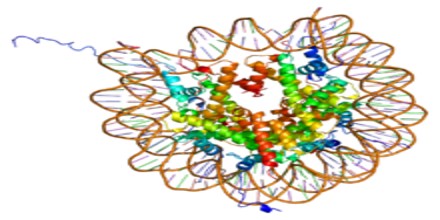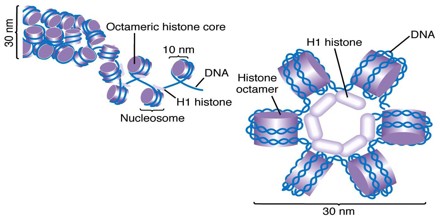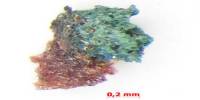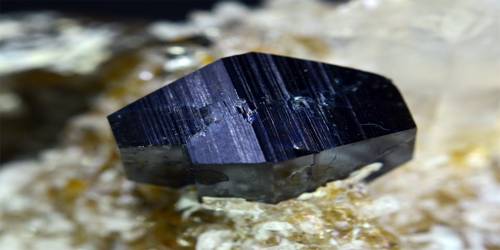Histone
Definition
Histone is one of a number of simple proteins (often found in the cell nucleus) containing a high proportion of basic amino acids, are soluble in water, dilute acids, and alkalies, and are not coagulable by heat. It is a protein around, which DNA coils to form chromatin. Without histones, DNA could not organize into chromosomes.

Histones are alkaline (basic pH) proteins. They are found inside the nucleus of eukaryotic cells. Their function is to package DNA into structural units called nucleosomes. Histones are the main proteins in chromatin. Chromatin is a combination of DNA and protein which makes up the contents of a cell nucleus. Because DNA wraps around histones, they also play a role in gene regulation.
Structure and Functions of Histone
Histones form dimers and tetramers. Dimers have two histones, and tetramers have four histones. Each nucleosome has two identical dimers, each comprised of one H2A and one H2B histone. This is called a H2A-H2B dimer. Each nucleosome also has one tetramer comprised of two H3 and two H4 histones. This is then called a H3-H4 tetramer. The individual histones and DNA form a nucleosome.
The four core histones share a common structural motif, termed the histone fold. The structures of the core histones have been used in conjunction with a threading algorithm to identify several other proteins that are likely to contain this fold. The variety of proteins found to contan this motif suggests that the histone fold is widespread and may play a diversity of roles. The high-resolution structures of two classes of proteins containing the histone fold were determined recently. The structure of the histone-like protein HMfB from the hyperthermophilic archaebacterium Methanothermus fervidus has been determined by NMR. The crystal structures of two subunits of Drosophila TFIID, dTAFII42 and dTAFII62, have also been determined, with important implications for the formation of nucleosome-like structures as part of the transcription complex. One of these subunits, dTAFII42, also has a bent central helix. Thus structures are now known for a total of seven proteins with the histone fold.

In general, genes that are active have less bound histone, while inactive genes are highly associated with histones during interphase. It also appears that the structure of histones has been evolutionarily conserved, as any deleterious mutations would be severely maladaptive. All histones have a highly positively charged N-terminus with many lysine and arginine residues.
A huge catalogue of histone modifications have been described, but a functional understanding of most is still lacking. Collectively, it is thought that histone modifications may underlie a histone code, whereby combinations of histone modifications have specific meanings. Histone modifications act in diverse biological processes such as gene regulation, DNA repair, chromosome condensation (mitosis) and spermatogenesis (meiosis).[29]
The common nomenclature of histone modifications is:
- The name of the histone (e.g., H3)
- The single-letter amino acid abbreviation (e.g., K for Lysine) and the amino acid position in the protein
- The type of modification (Me: methyl, P: phosphate, Ac: acetyl, Ub: ubiquitin)
- The number of modifications (only Me is known to occur in more than one copy per residue. 1, 2 or 3 is mono-, di- or tri-methylation)
So H3K4me1 denotes the monomethylation of the 4th residue (a lysine) from the start (i.e., the N-terminal) of the H3 protein.

Types of Histones
There are five families of histones (H1 through H5). H2A, H2B, H3, and H4 are the core histones, and H1 and H5 are the linker histones. The core histones form the center of the nucleosome, hence the term ‘core.’ The linker histones are found at the entrance and exit sites of the nucleosome and lock the DNA in place, hence the term ‘linker.’
A strand of DNA will wrap around the core histones 1.65 times. Interactions between nucleosomes allow for higher-order structures to form. These higher-order structures can condense the chromatin to the point where chromosomes form. Chromosomes are found in the nucleus and contain genes. The familiar shape of a chromosome is that of an X. It is histones that make this familiar structure possible.
















